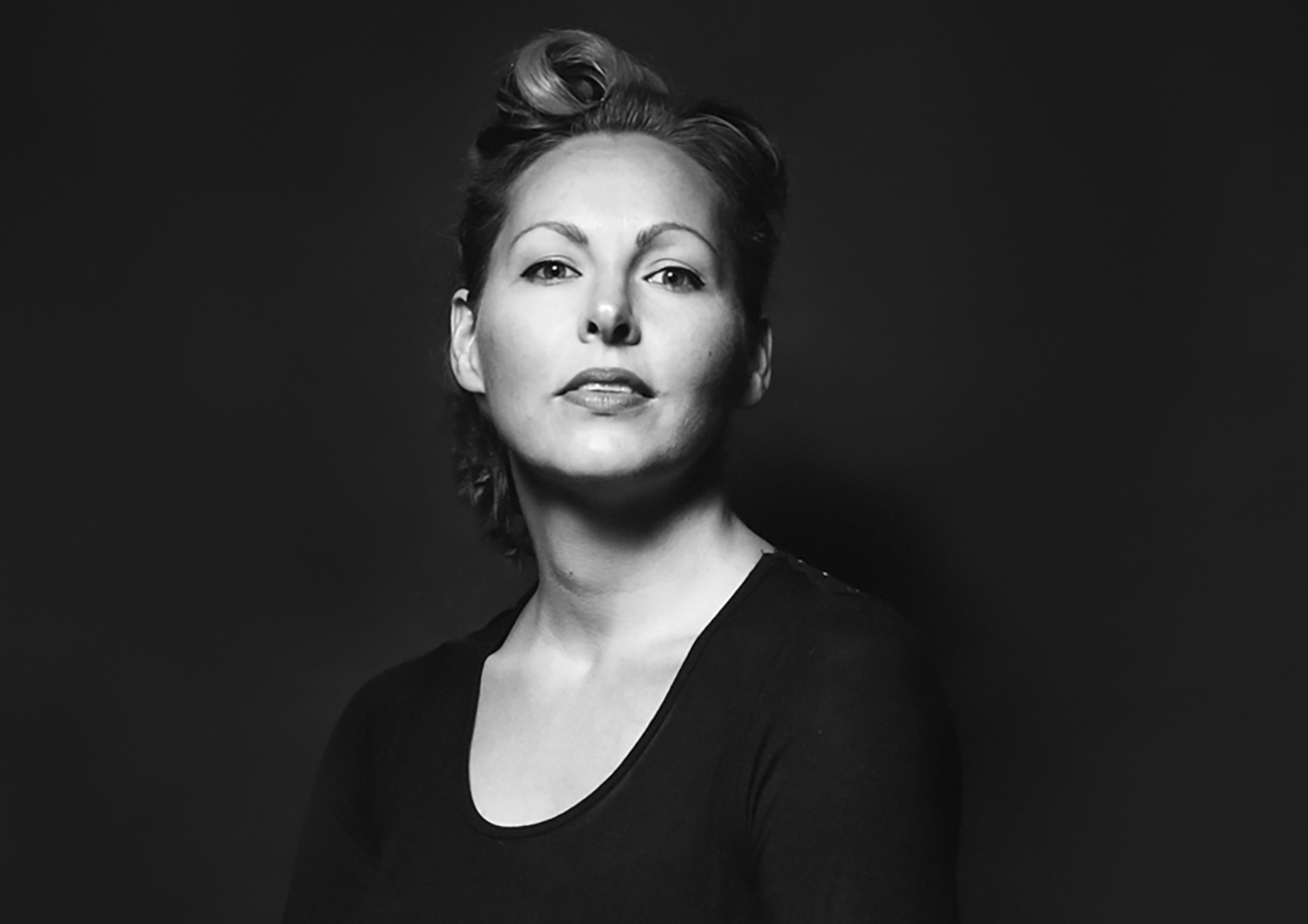Profile and photograph by Michael C. Butz
Years 22 • Lives Garfield Heights • Creates Cleveland • Degrees Bachelor’s in psychology, minor in studio art from Cleveland State University
To enter the world of an Aja Joi Grant composition is to engage in the mystical and journey into the mind. The imagery in her photographs – which frequently involves placing humans against the backdrop of nature – is subtle but powerful, and it reverberates.
“I might have a photograph of a person and I’ll have a photograph of a river, and I’ll blend them together to show how seamless it can be,” she says. “They’re obviously two different things, but they also can vibrate on the same frequency.
“I’ve always loved nature photography, but it’s hard for me to get that impact with just landscapes. So, I’ll try to get really good landscapes and really good portraits and see what fits together,” she says, explaining a process she’s experimented with since high school but honed only recently, as a student at Cleveland State University.

“Connexion,” an image that highlights the parallels of the element of water in a personal experience. Artwork courtesy of the artist.
“Perception is usually, like, you see one thing and you label it and you see another thing and you label it. If you can bring them together, then it doesn’t necessarily have a label – but you can see how they’re unified.”
That psychological component to her work isn’t accidental. Grant minored in studio art at CSU but majored in psychology, and the inner workings of the mind factor largely in her work.
“I like to make (art) really layered with my intentions,” she says. “Even in college, when we would have critiques and I would tell everyone, they’d be like, ‘Wow, that’s really deep’ because I’d go on for five minutes, ‘I was trying to do this, trying to show this, and it really represents this.’”
She doesn’t necessarily seek viewers’ understanding. In fact, in some ways, it’s just the opposite. She hopes they let go of understanding on their way to acceptance – an approach that, as it has for her, can apply to matters other than art.
“That letting go of understanding was really important to me because it helps you not get stuck on things,” she says of a lesson she learned both inside and outside the classroom. “‘I don’t understand why they did that’ or ‘I don’t get why somebody would say something like that.’ You don’t have to (understand why others do what they do). It’s their own process for something they’re going through.”

“Energy,” an image that highlights the element of earth. Earth corresponds with our physical bodies, and the individual is shown with a very engaged posture, showing a sense of understanding and fully utilizing his physical presence. Artwork courtesy of the artist.
Balancing the psychological in Grant’s work is the Kemetic, which relates to ancient Egyptian mythology and deities.
“They had a strong connection to nature and astrology, and the natural type of rhythm that would go on, and that’s my main goal, personally, is to not get too swayed by outside forces,” she says. “My art helps keep me grounded, and that’s why I like to go back to that source for inspiration.”
She specifically credits her ruling deity, Het Heru, for the presence of water in so many of her works. Her creative process also involves a good deal of research before she composes her works.
“I really look into the elements I want to incorporate,” she says. “Like, if I want to incorporate astrology or deities or other spirituality, or tarot or anything, I’ll research those types of things to see what elements I can bring into a photograph to resonate with what I have in my head, like colors or shapes or symbols I can use.”
Her work was most recently on view in March at the group show “Spitball” at Cleveland Print Room. The exhibition highlighted young, up-and-coming photographers – a characterization that adeptly describes Grant.
In addition to showing her work at Cleveland Print Room, Grant serves as a teaching assistant there, working to better the photography of fourth- to eighth-graders from Cleveland Metropolitan School District’s Campus International School.

“Rise.” Artwork courtesy of the artist.
“I love teaching. Ever since I decided to major in psychology, I’ve tried to work more with kids by teaching and tutoring. Being able to teach art to kids is probably the best part,” she says. “I can kind of see myself in them because I remember being young and being introduced to photography.”
She enjoys seeing students experiment and ask questions, and she’s careful to provide answers open-ended enough to let them form their own ideas. The latter attitude stems from when she was a younger artist made to feel as if she had to “mold her work a certain way to fit into the art world.” All in all, she finds fostering her students’ creativity rewarding.
“I get to share my experience with them – they’ve seen my photos up at the Print Room,” she says. “It’s interesting to see how they digest art they see and also still hold their own ideas and see how they bring them forward as well.” CV
Lead image: Aja Joi Grant outside and down the street from her Cleveland studio in the Waterloo Arts District.

“Aja’s work really resonates with me. Her innovative use of space and implied emotional elements, as well as her integration of people with natural elements, speaks to her ongoing dialogue and challenges our place in the natural order.”
– Shari Wilkins, executive director, Cleveland Print Room












This article just so beautiful, it speaks to me in ways I didn’t think I
would find today. Thank you to the publisher and the artist for such wonderful work